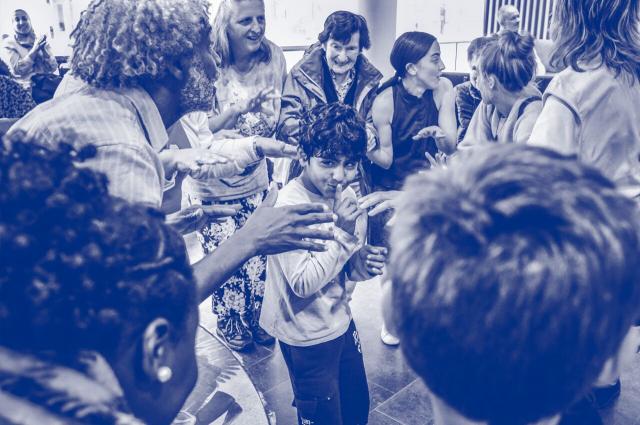Update August 12, 2024
Unfortunately, the grant ceiling for this scheme has been reached. The scheme has therefore come to an end. It is no longer possible to submit an application. We are currently busy developing new project schemes for 2025 and onwards.
Read the Policy Plan 2025-2028 hereRead this scheme in Dutch, Papiamentu or Papiamento here.
Do you have a plan for a project that contributes to commemorating and celebrating the abolition of slavery in the Kingdom of the Netherlands, and/or increasing knowledge and awareness of the history of slavery? Are you an individual, professional or culture creator who, in your free time, actively participates in activities in the area of cultural participation or cultural education?
If so, you may be eligible for a contribution from the Fund for Cultural Participation's 'Dutch Slavery Past Memorial Year' scheme. It is possible to apply in Dutch, English, Papiamentu and/or Papiamento. For applicants from the Caribbean part of the Kingdom whose first language is not Dutch or English, it will be possible to write applications in Papiamentu and Papiamento and have them translated into Dutch or English before submitting the application to the Fund.
Within the subsidy scheme of the Fund for Cultural Participation, the focus is on participatory activities where participants are actively involved. This subsidy is for initiatives wherein aspects of history and slavery are brought to the fore, that create educational material, stimulate healing processes or set up (international) cooperation between institutions.
The Government of the Netherlands is making € 2 million available. Read more.
Contact
The scheme has come to an end. This completes the activities for scouts in Aruba, Bonaire, Curacao, Saba, Statia and St Maarten. Should you wish to contact the Fund, you can do so via herdenkingsjaar@cultuurparticipatie.nl or by phone at +31 (0)30 - 2336030.
Who can apply?
With regard to potentially supported projects, it is a prerequisite that the community(ies) itself is the main applicant. It is important that they have a contribution to the design, organisation and implementation of the project. They must take the lead in execution. The main applicant may cooperate with, for example, cultural organisations, heritage institutions or educational institutions. This may also involve collaboration with an organisation abroad through, for example, online meetings, a report or sharing and applying forms of collaboration between the different organisations.
One may apply for subsidy for projects that contribute to one or more of the following effects:
- effect a: reaching new target groups;
- effect b: building lasting connections or networks of communities;
- effect c: participants develop multiple perspectives on the history of slavery;
- effect d: participants use knowledge about slavery as source material to experience culture;
- effect e: communities increase their self-reliance;
- effect f: promoting the healing process of participants from relevant communities.
Want to know more? Watch our webinar
The previously issued documents and video still list the old deadlines/amounts. The deadlines on this page are up-to-date.
Subsidy will be provided only to the extent that the applicant demonstrates that the available financial resources, including the subsidy from the Fund, are sufficient to execute the project.
Applicants based in the European part of the Netherlands may be reimbursed in terms of total project costs:
- category 1 projects: maximum of 100%;
- category 2 projects: maximum of 100%;
- category 3 projects: up to 90%.
Applicants based in the Caribbean part of the Kingdom may be reimbursed in terms of total project costs:
- category 1 projects: maximum of 100%;
- category 2 projects: maximum of 100%;
- category 3 projects: maximum of 100%;
Applicants located in:
- the European part of the Netherlands may use up to 10% of the subsidy from the Fund for material investments required for the project.
- the Caribbean part of the Kingdom may use 20 % of the subsidy from the Fund for material investments required for the project.
Applications for subsidies are assessed against the following criteria:
- Substantive quality of the project in relation to the purpose of the scheme
- Organisational quality
Only those applications that meet both assessment criteria can be considered for funding.
The subsidy ceiling is €1.000.000.
See a summary of the three categories below:



Interested?
Under the Documents section on this page, you will find various files that can further assist you with an application. If you would like to apply for a grant? Please, create an account for our application system. To do so, click on the Apply for Grant button at the top of this page. Need a little more help? Contact us at herdenkingsjaar@cultuurparticipatie.nl.



